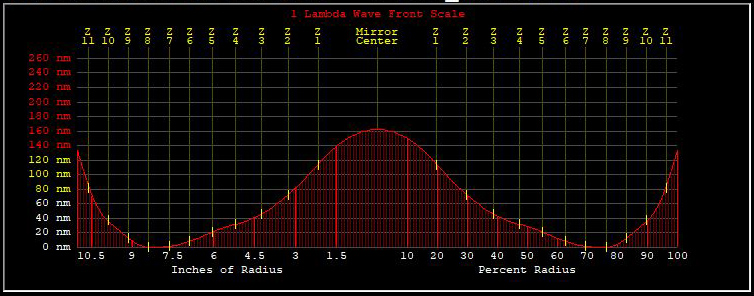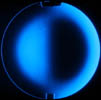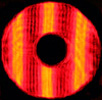November 15, 2023: Undercorrection is still not the answer
All text and images copyright Michael E. Lockwood, all rights reserved, unless otherwise noted.
Over the past century, many mirrors have been left undercorrected on purpose in an attempt to compensate for the change in a mirror's shape that cooling causes. Even the Hale 200" telescope had issues near its edge because the rim of the very thick 200" cast mirror would shrink significantly as it cooled. This causes the light to focus with too long of a focal length, and past the desired spot. This blurs images. The edge of the 200" was later insulated to help reduce the cooling effect.
In most amateur instruments, this is not necessary. An accurately corrected mirror is necessary. Many amateur mirrors, especially those tested using the star test, end up significantly undercorrected because the cooling adds correction to the mirror. This is nearly impossible to avoid unless you live in a place with a stable nighttime temperature for an extended period. Thus, tests of the equilibrated glass in a lab environment end up being significantly more accurate.
This mirror recently came into my shop, and the test result is below. Interferometry confirmed the correction issue.

This is what undercorrection looks like - the center and edge of the mirror are high relative to the ideal shape. (A perfect mirror would have a flat plot with 0 nm error across it.) Under good conditions, when this mirror has mostly equilibrated, the transverse error of the mirror would be very large at the edge, in this case about 10 Airy disk radii. This means that the light reflected by the outer parts of the mirror focus too short, and will miss the ideal spot by about 10 Airy disk radii. Even at best focus this would significantly bloat stars, and this severely harms high-power performance.
Having used the mirror myself, the star test actually looked fairly good, but an issue was still suspected. It's interesting how well an inaccurately-corrected mirror can perform, at least at lower powers. It is deceiving, but the issue shows up when conditions are really good and you push the power up and get soft images.
When it came in for testing prior to recoating, the issues was confirmed, about 0.3 waves of undercorrection. A few days of work resulted in a very accurately corrected mirror that will now perform up to its potential. The owners are in for a different experience when they begin observing with their more accurate mirror and it equilibrates on a good night.
Don't assume a mirror is good simply because people say it is or because the star test is not alarming. Demand more.
Please check back for future installments of "In the Shop".
Mike Lockwood
Lockwood Custom Optics



